 |
| My vegetable garden (at another time of year) |
Last night, I attended our bi-monthly Heart of Virginia Master Gardeners Association meeting. We heard a great presentation on raised bed gardening. (I’m so sorry to the person who spoke; I can’t remember your name! If anyone knows it, please leave a comment so I can give credit where credit is due.) The lady who presented grows vegetables for the local farmer’s market, and she gave us some great winter vegetable garden ideas in addition to the basics of planning and building a raised bed vegetable garden.
I was pleased and a little relieved to hear that we did indeed plan our raised bed vegetable garden correctly. The majority of our vegetable garden beds are 8 feet by 4 feet, and four feet is about the maximum width for raised beds. Anything wider and you cannot easily lean in to plant, weed or harvest vegetables. It’s also a convenient width because the lumber we chose for the beds came in board sizes of 4 x 8, so three 8-foot boards created one rectangular garden bed.
I disagreed with the presenter on the pathway materials she recommended. She recommends putting down landscape barrier or fabric to suppress weeds, then using wood chips or gravel on top. Wood chips sound like a good idea, but gravel may not be such a good idea. First, I can’t think of how I’d push a heavy wheel barrow over gravel. I think the wheel would get stuck in the gravel and make it even more difficult to push through the garden. But I had also done considerable research when we were constructing our raised bed vegetable garden, and some sources indicated that gravel paths radiate heat back to the plants. For winter vegetable gardening, that’s a great idea, but in the hot southern summers I thought it would cook my plants before they got to the kitchen. I chose grass, and I’m pleased with my choice. The clippings do not go up into the beds as some say they experienced, but I use an old-fashioned push mower and just let the clippings compost back into the grass. The only thing that is a bother with the grass pathways is keeping the edges trimmed; the mower can’t cut directly against the wood of the raised beds. If I don’t use the weed trimmer every week or so, the grass begins to go to seed, and then I have weed issues in the vegetable beds. But the weeds are negligible, and I much prefer grass than gravel or wood chips.
One idea that I loved from last night’s presentation was on winter vegetable garden ideas using raised beds. The presenter described using chicken wire and PVC pipe frames, with row covers and/or plastic over the top, to create both an animal barrier with the chicken wire and retain warmth. She described how she grew peas last year and harvested them in February – and my mind began to race. I haven’t been successful at all growing peas here and maybe it’s because I plant them too late. Now I’m mulling over how I can transform one of the unused raised beds into a winter vegetable garden. It may be possible to experiment with just one bed and see how it goes.
We’re doing several things right, according to what I learned last night. Soaker hoses or drip irrigation appear to be the best methods of watering raised garden beds, and it isn’t my imagination – the beds do dry out more quickly than the traditional garden beds located directly on the ground. We chose a combination of pressure-treated lumber and non-treated, and the research I did on pressure-treated wood indicated that it is relatively safe; her research concurred with my own. We are still cautious and plant root crops in beds made from untreated lumber, but it was good to hear that my decisions on construction materials concurred with hers. She certainly had a great deal of experience, and I love learning from experienced gardeners. That was how I learned to garden as a child – by watching, listening, and helping my next door neighbor, Mr. Hoffman, and tagging along after my grandmother, my dad and my older sister. I certainly learned a lot about winter vegetable gardening, raised bed vegetable gardening and more last night.
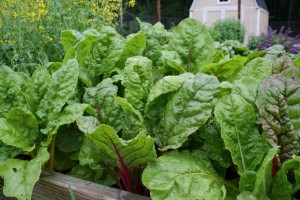 |
| Yummy beets growing in my vegetable garden |

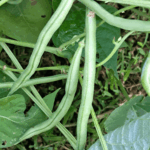
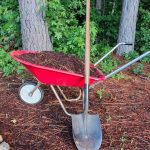
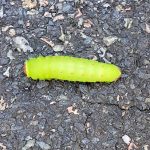
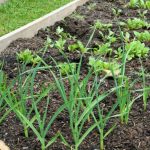
Great info! thanks for sharing. FWIW, I avoid PVC in the garden at all costs, but that’s just me. I’m always concerned about leaching since PVC is a known carcinogen. We experimented and beds are 4′, 3′ and 2′ wide. I love the 2′ wide ones the best. They are the easiest and hence, most fun to work. 4′ are just too wide for my short arm length. (g).